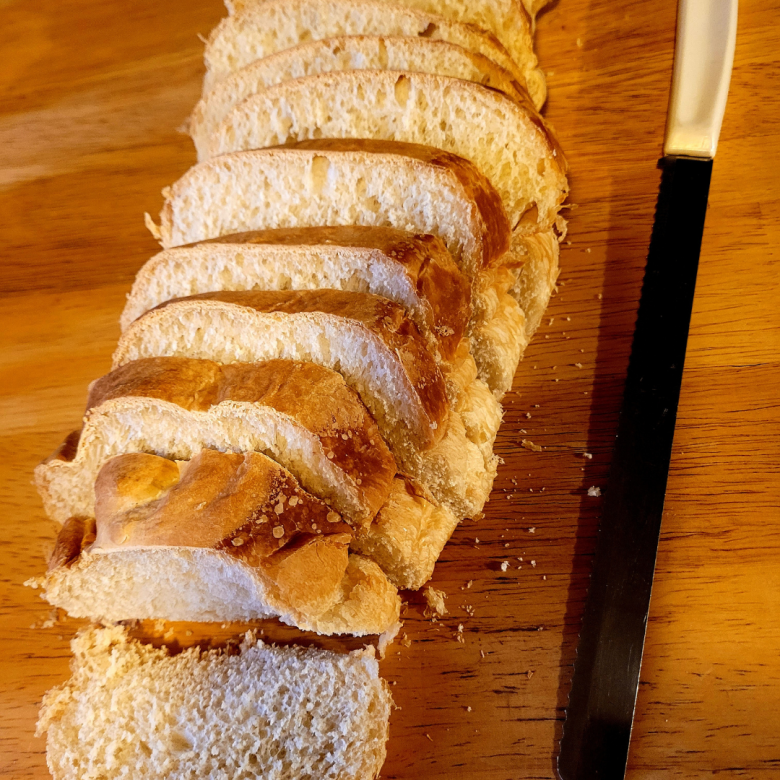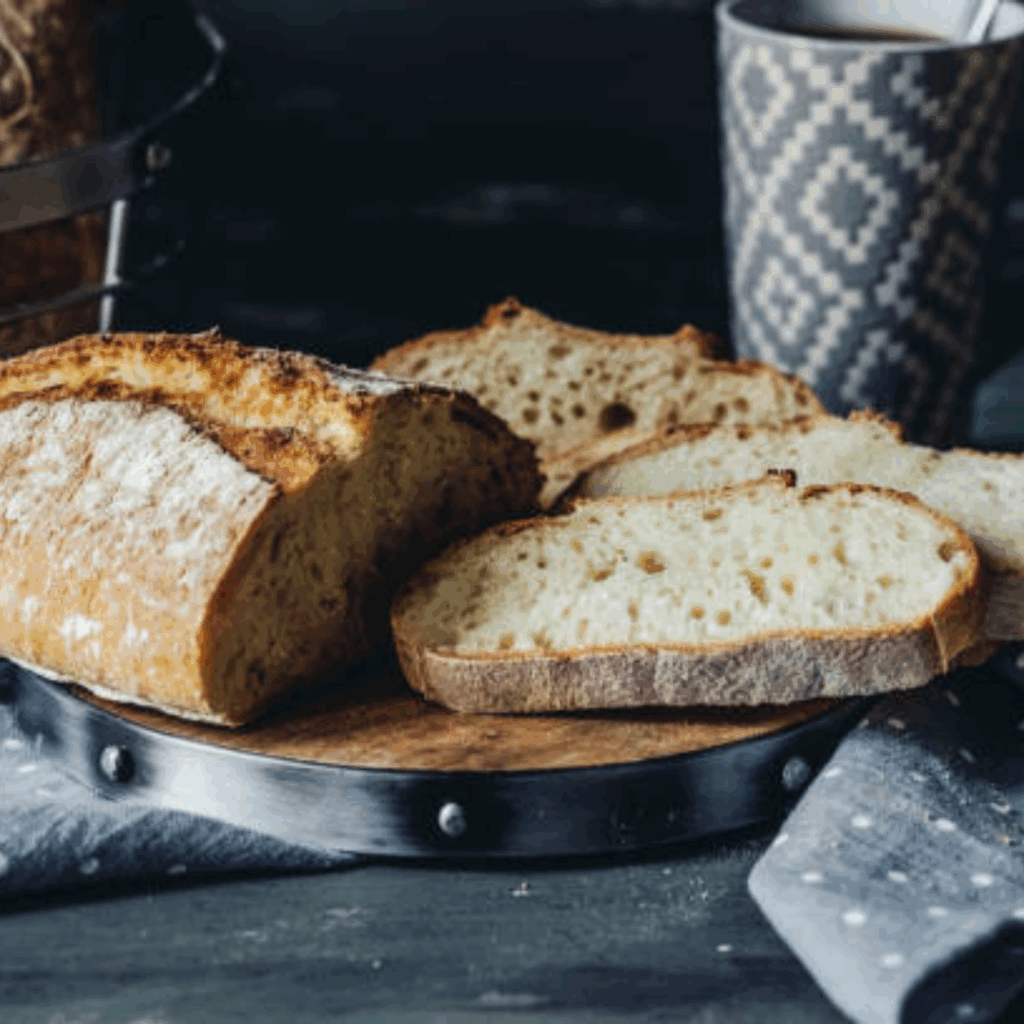Learn how to make the best white bread with this easy beginner-friendly recipe. Soft, fluffy, and perfect every time—no experience needed!
There’s nothing quite like the smell of freshly baked white bread filling your kitchen. If you’ve never baked bread before, don’t worry—this beginner-friendly recipe will guide you step by step. With simple ingredients and clear instructions, you’ll be able to create a soft, fluffy loaf that rivals anything from a bakery. By the end, you’ll not only have delicious bread to enjoy but also the confidence to experiment with baking on your own!
This is a pinnable post. Tap or hover over any image in this post to pin to your Pinterest Boards.
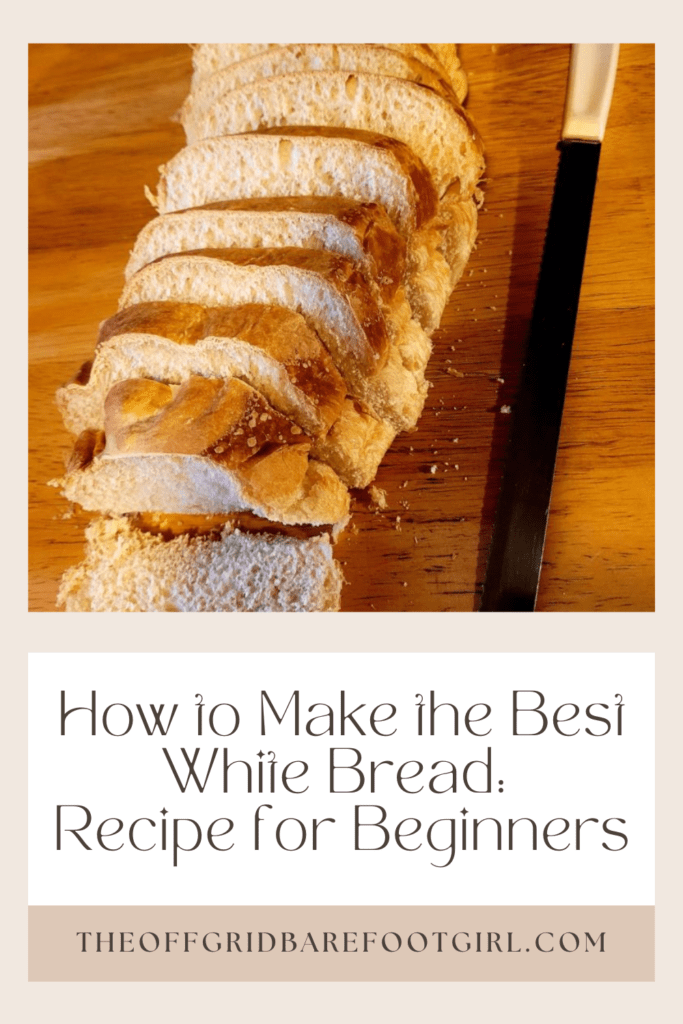
Introduction to Making White Bread
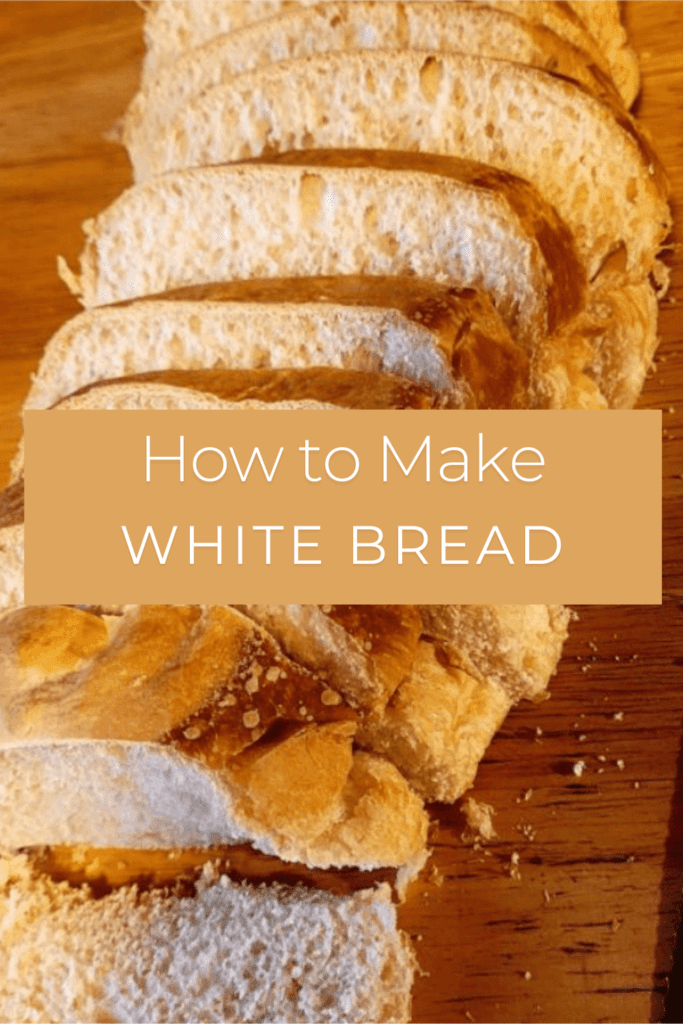
The Allure of Homemade White Bread
Making your own homemade white bread is such a satisfying feeling and accomplishment. It is a fun skill to master and you will feel wonderful each time you bake bread in your home. I have been making bread for over ten years. You can provide delicious homemade white bread for your dinner table any time of the year. The holidays make bread-making even better!
There’s something undeniably comforting about the aroma of freshly baked bread wafting through your home. Homemade white bread holds a particular allure, conjuring up images of warm, pillowy slices that are perfect for sandwiches, toast, or simply slathered with butter.
Taking the time to learn how to make your own homemade white bread is really not that hard and it is a tremendous self-sufficient skill to learn. Homemade white bread does not require any special equipment. All you really need are a few mixing bowls, a countertop, and your hands! Homemade white bread also only requires basic pantry staples you may already have in your pantry. Keep reading to learn how you can get started in making your own homemade white bread right now.
The Benefits of Making White Bread from Scratch
Sure, you can easily pick up a loaf of white bread from the store, but there are several benefits to making it from scratch. First and foremost, you have total control over the ingredients, ensuring that your bread is free of preservatives and other additives. Plus, homemade bread is often more cost-effective, as you can create multiple loaves for the price of a single store-bought one. Finally, the satisfaction of biting into a slice of bread that you made with your own hands is unmatched. So, let’s get started!
Essential Ingredients for White Bread
Flour: Choosing the Right Type for White Bread
When it comes to baking white bread, choosing the right flour type can make a world of difference. While all-purpose flour is typically the go-to option for many recipes, opting for bread flour can ensure a fluffier and more elastic texture in your loaf. The higher gluten content in bread flour promotes proper gluten development, which results in a chewier and better-risen bread.
However, if you prefer a lighter and finer crumb, cake or pastry flour may be more suitable for your white bread recipe. These flours have a lower protein content than all-purpose or bread flour, creating a softer and tenderer texture in the final product. Additionally, considering the source of the flour is crucial as well. Opting for unbleached and organic options ensures that no harmful chemical agents are used during processing while helping to support sustainable farming practices. Ultimately, experimenting with different types of flour allows you to personalize your white bread to perfection!
Yeast: Understanding Different Varieties and Their Function
Yeast is the magical microorganism responsible for making bread rise. Active dry yeast and instant yeast are commonly used in white bread recipes. Active dry yeast needs to be activated in warm water, while instant yeast can be added directly to the dough. Both types will give you satisfactory results, so use whichever is most convenient for you.
Sugar and Salt: Balancing Flavor in White Bread
Sugar is not only a sweetener for your bread, but also acts as a food source for the yeast, aiding in its fermentation process. Salt, on the other hand, enhances the overall flavor of the bread and helps to control yeast activity.
Liquid: The Role of Water and Milk in White Bread
Water is the most basic liquid used in bread recipes, providing hydration to the dough. However, using milk instead of water can add richness and a softer texture to your white bread. Feel free to experiment with different ratios of water and milk to achieve your desired results. You can use buttermilk for a tangy taste. The other liquid is vegetable oil to add hydration to the bread.
Step-by-Step Instructions for Making White Bread Dough

Measuring Ingredients Accurately
Accurate measuring is crucial when it comes to baking bread. Use measuring cups and spoons specifically designed for dry and liquid ingredients. Level off the top of dry ingredients with a straight edge for precision, and always use the same measuring technique throughout the recipe.
Mixing the Dough: Techniques and Considerations
When mixing your white bread dough, you can either use a stand mixer with a dough hook attachment or knead it by hand. Both methods work well, so choose whichever suits your preferences. Just remember to mix until the dough comes together into a smooth and slightly tacky ball.
The Importance of Proper Hydration
Proper hydration is crucial for achieving the ideal texture in your white bread. If the dough feels too dry, gradually add more liquid. If it feels too sticky, add more flour in small increments. The dough should be soft, supple, and slightly sticky to the touch.
Techniques for Kneading and Shaping White Bread
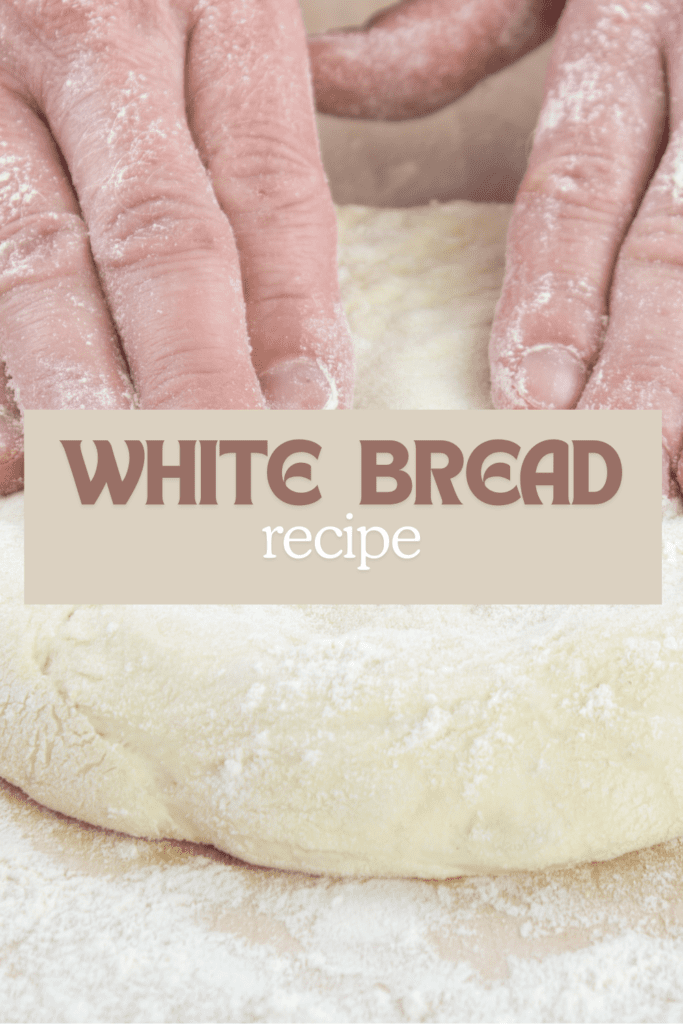
Kneading Basics: Developing Gluten for Optimal Texture
Kneading is the process of working the dough to develop gluten, which gives bread its structure and elasticity. To knead, lightly flour your work surface and use your palms to push the dough away from you, then fold it back over itself. Repeat this motion, adding more flour if necessary, until the dough becomes smooth and elastic.
Testing Dough Readiness: Windowpane Test
To determine if your dough is properly kneaded and ready for fermentation, perform the windowpane test. Take a small piece of dough and gently stretch it between your fingers. If it stretches thin enough to let light pass through without tearing, you’ve achieved the ideal gluten development.
Shaping the Rough: Rolls, Loaves, and Other Forms
Once your dough is properly kneaded, it’s time to shape it into the desired form. From classic loaf shapes to dinner rolls and beyond, the possibilities are endless. Follow the specific instructions in your recipe and use your creativity to shape your white bread. Remember, there’s no right or wrong shape, as long as it tastes delicious!
The Importance of Proofing and Baking White Bread
Understanding the Proofing Process
Proofing is like giving your bread time to relax and rise before it hits the heat. It allows the yeast to do its magic, creating those light and fluffy air bubbles. Without proper proofing, your bread might end up as dense as a brick. So, don’t rush this step!
Creating an Ideal Proofing Environment
Think of proofing as a mini-vacation for your bread. It needs a warm and cozy environment to thrive. Find a spot in your kitchen where there are no cold drafts (it hates those) and let your dough rise to its heart’s content. A little patience now will pay off big time later.
You can use your oven with the light on or your stovetop light and keep your bread under that light. Either way, I find that rising my dough in the oven or on the stovetop is the perfect place to achieve the perfect rise.
Preheating and Oven Considerations for Baking
You wouldn’t dive into a pool without checking if the water is just right, right? Well, the same goes for baking bread. Preheating your oven is crucial to ensure your bread bakes evenly and rises beautifully.
Tips and Tricks for Achieving the Best Texture and Flavor
Adding Enrichments: Butter, Eggs, and Other Options
Sometimes life needs a little extra flavor, and so does your bread. Adding enrichments like butter or eggs can take your white bread from basic to bougie. It not only adds a touch of decadence, but also makes your bread moist and tender. So go ahead, live a little, and indulge your taste buds.
Enhancing Flavor with Herbs, Spices, or Seeds
Plain white bread is like a blank canvas, ready to be jazzed up with a pop of flavor. Sprinkle in some herbs, spices, or seeds, and watch your bread turn into a masterpiece. Whether it’s a sprinkle of rosemary, a dash of cinnamon, or a handful of sunflower seeds, these little additions can make a big difference in taste.
Creating a Crusty or Soft Crust: Techniques for Desired Outcome
The crust is like the bread’s first impression, and you can shape its character to your liking. Do you prefer a soft, delicate crust or a hearty, crunchy one? By adjusting the oven temperature and baking time, you control the final texture.
For a softer crust, bake at a slightly lower temperature, or consider brushing the dough with butter before or after baking. For that classic crispy crust, bake at a high temperature and introduce steam in the first few minutes. Finding the right balance lets you craft a crust that perfectly complements the bread’s flavor and makes each bite memorable.
My daily bread is typically a soft fluffy bread that my family prefers and loves. I do this practically daily. I then experiment with different types of bread or sourdough bread throughout the week for pairing with meals as necessary.
Troubleshooting Common Issues in White Bread Making
Understanding Common Problems and Their Causes
Sometimes, even the best bakers encounter bumps in the bread-making road. Don’t throw in the towel just yet. Understanding common problems and their causes is the first step to becoming a bread whisperer. From dense loaves to wonky shapes, this section will have you armed with knowledge and ready to tackle any baking challenge.
Fixing Issues with Dense or Underproofed Bread
No one wants a heavy, dense loaf when they’re aiming for a light and airy bread! If your bread feels more like a brick than a cloud, don’t worry—I have some tips to help you troubleshoot and perfect your loaf.
Dense bread often means the dough was underproofed or didn’t rise enough, which can happen for several reasons. Try adjusting the yeast amount to ensure there’s enough to help your dough expand. Also, make sure to give your dough plenty of time to rise; warmer environments speed this up, while cooler settings slow it down, so aim for a balanced rise. With a bit of practice, you’ll soon be baking soft, fluffy loaves every time!
Dealing with Overproofed or Collapsed Bread
If your bread looks more like a deflated balloon than a lofty loaf, overproofing or dough collapse may be the cause. But don’t worry—we’ve all experienced the occasional #breadfail! When the dough is over-proofed, the yeast has exhausted its food supply, causing the structure to weaken and sometimes collapse. To prevent this, try shortening your proofing time next bake, or proof in a slightly cooler spot to slow fermentation. If you catch it early enough, you can gently reshape the dough, give it a short second rise, and bake as usual. With a few adjustments, you’ll be back on track to a beautifully risen, airy loaf!
Many times, I have allowed my bread to overproof on the second rise while in the bread loaf pan. In my early years of bread-making, I thought it would be pretty if I allowed the dough to proof over the ridges of the pan before placing it into the oven. Well, do not do that! The bread will continue to rise during the baking process and you will have an overflow of bread that droops over the pan. It is not very pretty, trust me. I still used the bread. When cutting it, it had many gabs and large holes because it was over-proofed.
Variations and Adaptations of the Basic White Bread Recipe
Experimenting with Different Flour: Whole Wheat, Rye, etc.
Variety is the spice of life, and the same goes for bread. Once you’ve mastered the white bread game, why not take it up a notch? Experimenting with different flours like whole wheat or rye can add new flavors and textures to your bread. It’s like introducing your taste buds to a whole new world of possibilities. You’ll never look at bread the same way again.
Incorporating Fillings or Toppings for Added Pizzazz
Who said bread has to be plain? Jazz it up with fillings or toppings! Whether it’s gooey cheese, savory herbs, or sweet cinnamon sugar, you can take your bread from simple to sensational. Not only will it impress your taste buds, but it’ll also win you some serious bragging rights among your friends and family. Get ready to become the bread master of your social circle.
Ingredients Needed for White Bread Recipe
The best thing about making homemade white bread is that it only requires basic pantry staple ingredients.
- Dry active yeast.
- Water.
- Sugar, honey, or maple syrup.
- Salt.
- Flour.
- Butter or oil.
Proofing The Yeast
It takes ten minutes for the dry active yeast to become active. Mix one cup of lukewarm water, 2 1/4 teaspoons of dry active yeast, and 2 tablespoons of sugar, honey, or maple syrup, mix well, and allow to activate and become bubbly for ten minutes in a warm area. An oven with the light on is a great bread-proofing environment.
It is important to ensure your mixer bowl is warm prior to placing the yeast mixture to begin the proofing process. A cold bowl could kill the yeast before it even has a chance to become activated.
To do this, you can place a small amount of water in the microwave-safe bowl and microwave it for a few seconds to get it warmed up, but not hot. Otherwise, you can place it in a warm oven for a few minutes while you are gathering your ingredients. Either way is an effective method to warm up your bowl safely (NOT HOT!)
Kneading Requirements for White Bread Recipe
Mix in 4 1/2 cups of flour, one cup at a time into the proofed yeast mixture and the remaining ingredients for the bread dough.
It takes approximately eight to ten minutes to knead your bread. Go ahead and use your stand mixer if you want to with the dough hook attachment, however, kneading by hand can be satisfying and helps to alleviate some stress. Feel free to take out some stress during the kneading process.
Kneading for eight to ten minutes helps the gluten to form properly, making the bread hold its form well and be less dry and crumbly, so be sure to knead the dough for at least eight to ten minutes.

To prevent dry crumbly bread, I like to knead my dough more with oiled hands and surfaces rather than with too much flour. With experience, you will find your own balance for the perfect kneading techniques. I use really lightly oiled hands and surfaces with a very light dusting of flour while kneading, and rarely add more oil or flour during the kneading process.
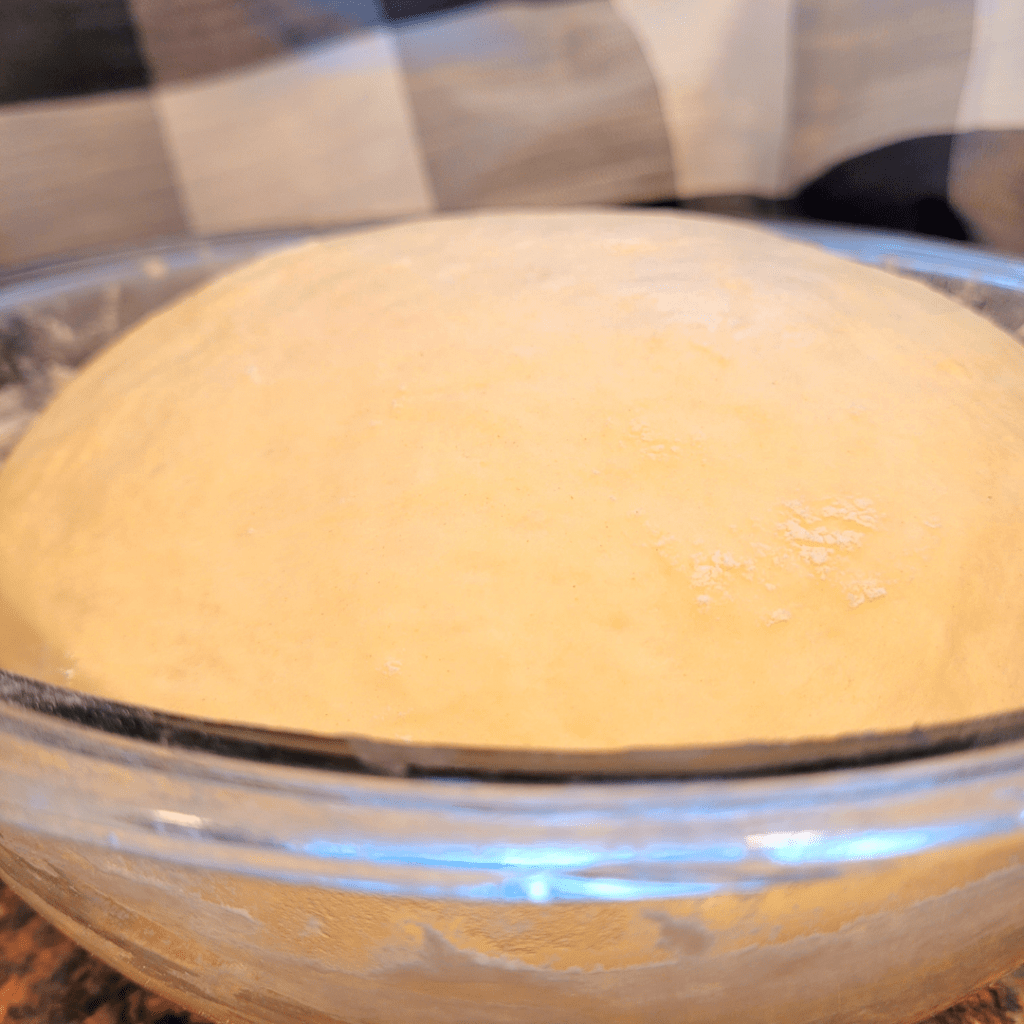
The First Rise
During the first rise of the dough, the dough forms its gluten and yeast flavor. It is important not to overproof. Weather, humidity, and temperature can affect the proofing of your dough, so be sure to allow adequate time for proofing.
I find that in the summer, the countertop or stovetop works great for proofing. Of course, the stove will not be turned on. In the winter, I find that the oven with the light turned on works great for breadproofing. It all depends on what I feel is right and needed for the temperature requirements of my kitchen on the day of my bread making.
The Shaping of the Dough

When the first rise is over, it is time to shape the dough. Remove the dough that has doubled in size, and knead it for approximately five minutes. Divide the dough into two small rectangles smaller than the size of the loaf pans you will be using. Begin to roll the dough starting from the long side into a tightly rolled log. Tuck both ends of the log underneath and pinch together all seams.
Place each dough log into each greased loaf pan and lightly cover with plastic wrap and place in a warm area for the second rise.
Keep in mind that using darker-colored or metal loaf pans can bake the outside of the bread too fast before the inside is completely done. This could result in a burnt crust or crust that is too hard and stiff. This could make cutting the loaf difficult or unpleasant to eat.
Therefore, I use a clear glass loaf pan whenever I am baking my homemade white bread recipe to ensure I achieve the perfect crust every time.
The Second Rise
Place each log of dough into both greased loaf pans. Cover them with plastic wrap and allow the dough to rise a second time, just one inch above the rims of the loaf pans.
It is important not to overproof during the proofing process since it can exhaust the yeast and dough, resulting in a poor-quality baking experience. The loaf can collapse in the oven resulting in flatbread. Therefore, it is important not to allow the dough to rise more than one inch above the rims of the loaf pan. As I mentioned previously, the dough will either droop over the ridges of the pan or droop and collapse inside the pan. So do not over-proof!
What Over-Proofing Looks Like
On more than one occasion (when I got too busy with other things), I have over-proofed my dough high above the rims of the loaf pans (even as an experienced baker). Sometimes, they did not cave in and became flat, however, another issue occurred. While the bread looked amazing with a high rise, once it was cooled and it was time to slice the loaf, there was a deep hollow cave above the bread. This was terrible and left a huge gap in the tops of the bread, making the surface of the bread small with a huge hole and basically without a top crust since it was not able to be attached to the rest of the loaf and fell apart.
Therefore, be sure not to over-proof the second rise or allow the dough to rise above the rims of the loaf pans more than one inch. I cannot stress this enough. Keep a close eye on your bread during the second rise.
What Over-Proofed Bread Looks Like!
The following photo is an example of one of my over-proofed loaves with gaps and holes in every single slice! Very disappointing. I do not want that to happen to yours so do not allow the dough to rise too high!
Here is a look at my over-proofed bread.


I bake my bread loaves at 350 degrees for 30 minutes. I then brush them with butter and place them back in the oven for 15 more minutes to turn them to a golden color.
To know that the bread is done baking, it should be golden in color and sound hollow inside when you lightly tap in the center with your finger.
There is nothing better than pulling out delicious golden bread loaves that you have made yourself! Check out the ones I made in the following photos!




Be sure to use a serrated bread knife to slice your loaves once they are completely cooled and enjoy!
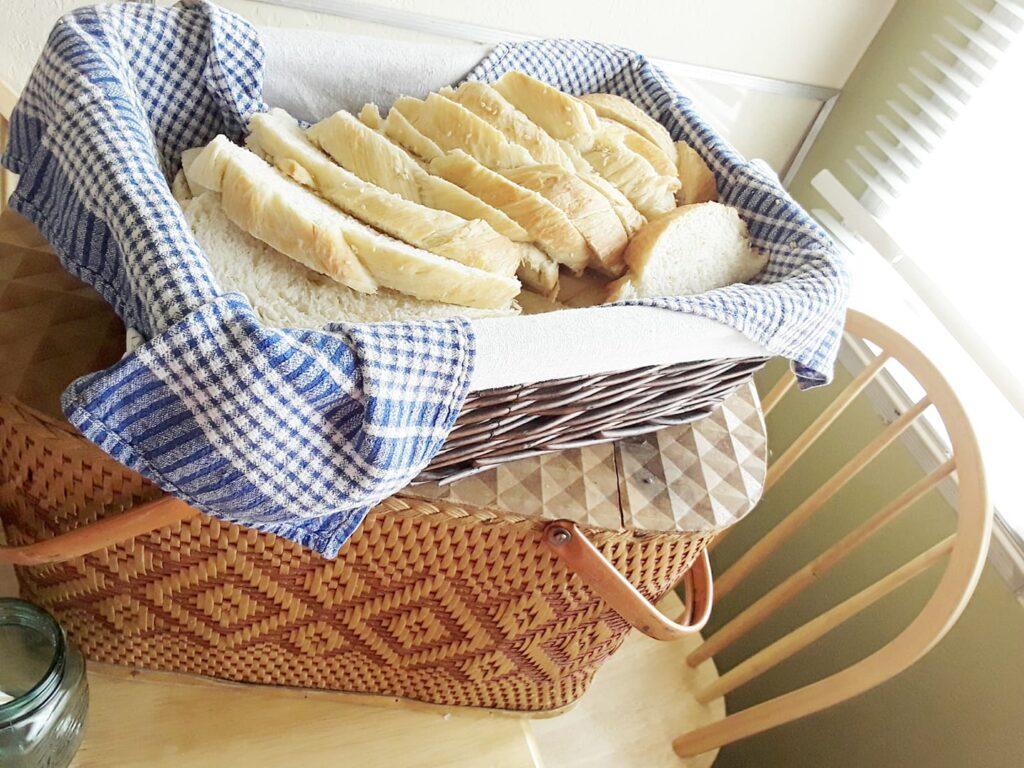
Freezing the Dough
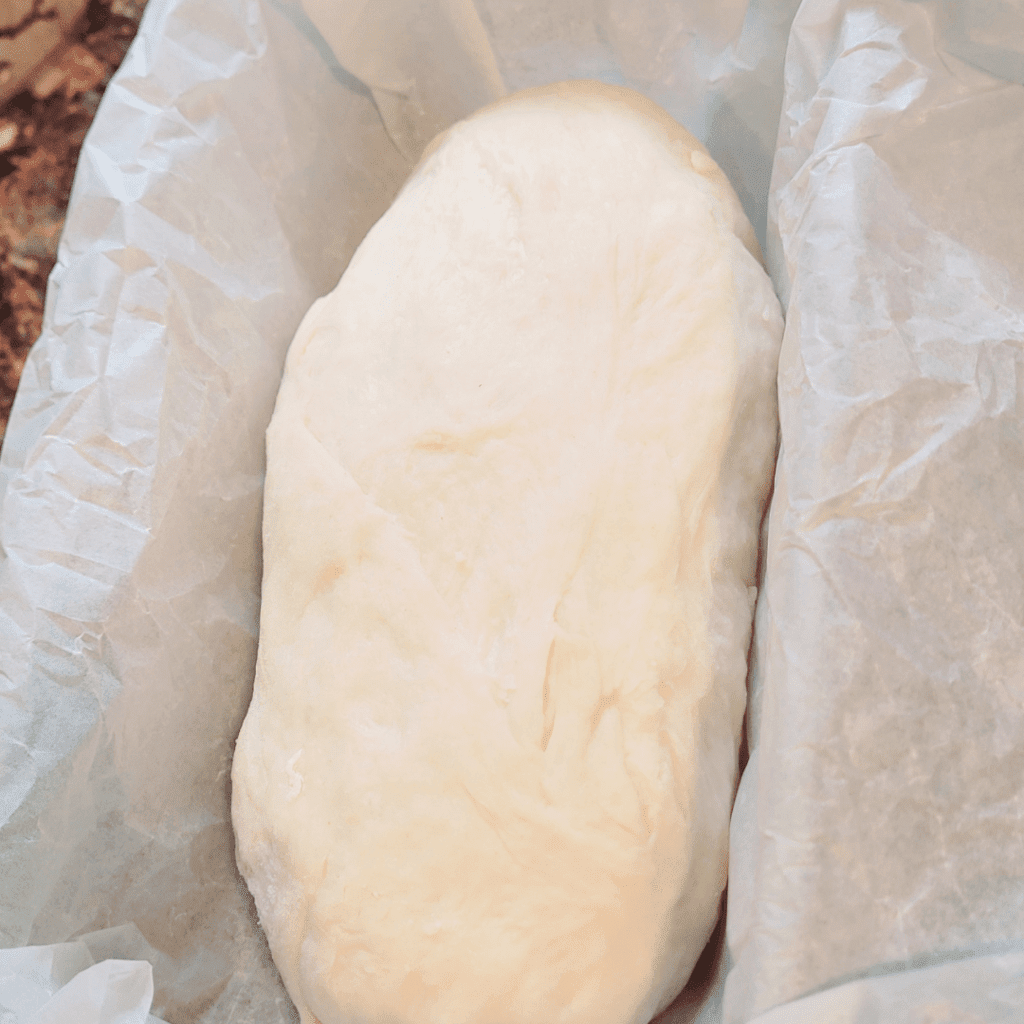
You can freeze the dough after shaping it after the first rise and before the second rise. Shape the dough into a loaf and wrap it up in parchment paper and then plastic wrap it and place it in the freezer before it has a chance to rise. This is a great way to stock your freezer with homemade bread loaves ready to thaw and rise in the pan and read to bake whenever you want homemade bread for the day.
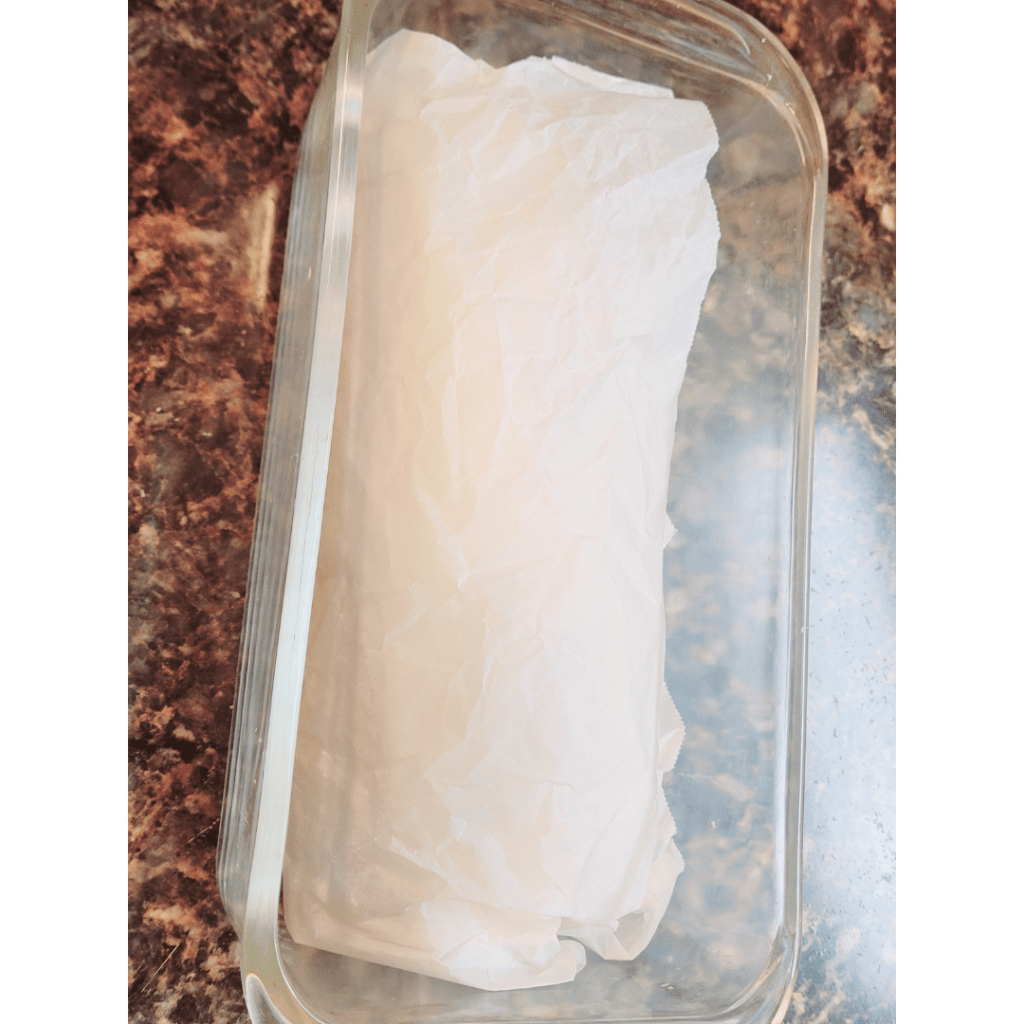
I make sure my loaf will fit in my bread pan before I freeze it so I can just place it right in the pan from the freezer to thaw and rise before baking. So shape it up, see if it fits, and wrap it up and freeze it. I can keep three dough logs in a gallon-sized Ziplock bag. This method makes it easy to place one frozen bread dough into your bread loaf pan while you are making your morning coffee! Just keep it in the parchment paper the whole time for easy clean up! You do not even need to grease your pan!
Keeping a few frozen dough loaves in the freezer is a great way to provide your family with homemade bread anytime you need without getting out the messy flour and kneading up a mess in your kitchen! Make up a few loaves ready to freeze, wrap them in parchment paper and plastic wrap, and place them in a large gallon-sized freezer bag.
Conclusion
With this beginner-friendly recipe and guide, you now have the knowledge and confidence to make the best white bread right in your own kitchen. Remember to be patient and enjoy the process of bread-making as you knead, shape, proof, and bake your loaf. Experiment with different variations and adaptations to personalize your white bread to your liking. Whether you’re craving a soft and fluffy sandwich bread or a crusty artisan-style loaf, the possibilities are endless!
Resources: Here are some helpful resources for further information.
- Homemade Bread Recipe – By Tastes Better from Scratch
- My Favorite White Bread Recipe – By Brown Eyed Baker
- The Simplest White Bread Ever Recipe – By Serious Eats
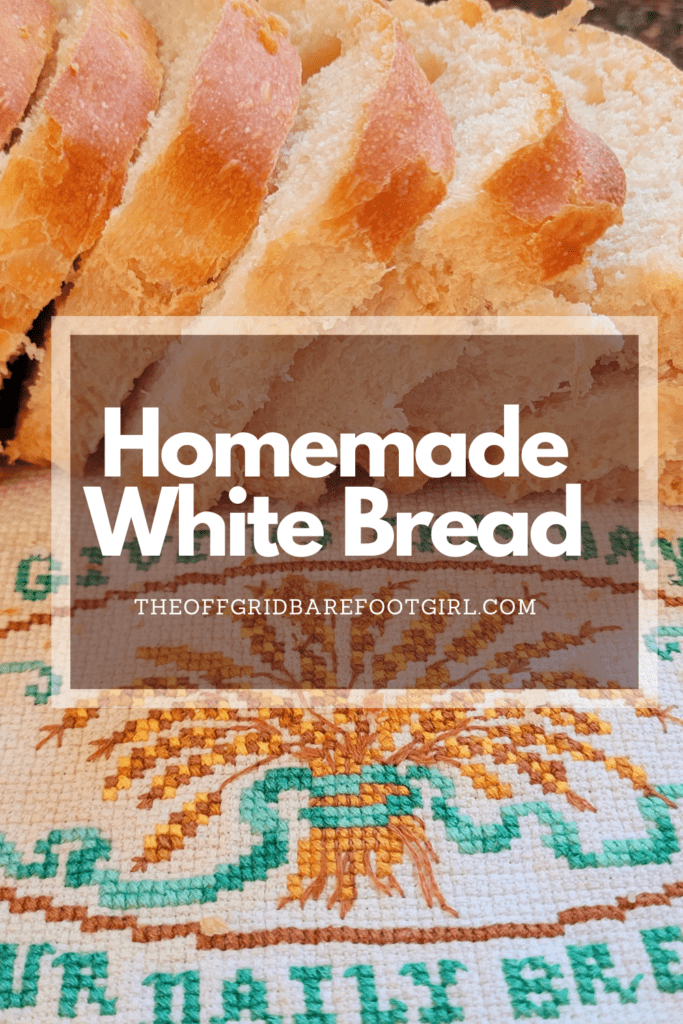
Frequently Asked Questions
1. Can I use all-purpose flour for making white bread?
Yes, all-purpose flour is commonly used for making white bread. However, if you desire a lighter and fluffier texture, you can also use bread flour, which has a higher protein content and helps create a better structure in the bread.
2. How can I tell if my bread dough has proofed enough?
A good way to check if your bread dough has proofed enough is by performing the poke test. Gently press your finger into the dough, and if it leaves a slight indentation that slowly springs back, the dough is adequately proofed. If the indentation remains, it may have over-proofed, and if it springs back quickly, it needs more time to proof.
3. How long does it take to bake white bread?
The baking time for white bread can vary depending on the size and shape of the loaf, as well as the specific recipe. However, as a general guideline, a standard 9×5-inch loaf typically takes about 30-40 minutes to bake at 350°F (175°C). It’s essential to monitor the bread towards the end of the baking time and look for a golden brown crust and a hollow sound when tapped on the bottom.
4. Can I freeze homemade white bread?
Absolutely! Homemade white bread freezes well and can be stored for up to 3 months. Once the bread has cooled completely, wrap it tightly in plastic wrap or aluminum foil before placing it in a freezer bag. To thaw, simply remove the bread from the freezer and let it come to room temperature at its own pace, or warm it gently in the oven.

How to Make the Best White Bread: Recipe for Beginners
Ingredients
Proofing Yeast
- 1 cup lukewarm water
- 2 ¼ tsp dry active yeast
- 2 tbsp sugar, honey, or maple syrup
Bread Dough
- Proofed yeast mixture as above
- 4 ½ cups all-purpose flour
- ½ cup lukewarm water
- 1 ½ tsp sea salt
- 2 tbsp sugar, honey, or maple syrup
- 2 tbsp melted butter or oil
Instructions
Proofing Yeast
- Place the water in a warm mixer bowl.
- Stir in the sugar, honey, or maple syrup to dissolve, and sprinkle the yeast over the water. Gently stir to mix.
- Allow the yeast to sit in a warm place for about 15 minutes, until it’s activated and becomes bubbly and frothy.
Bread Dough
- To the proofed yeast mixture, add the flour, warm water, salt, sugar, honey, or maple syrup, and melted butter or oil.
- Mix the ingredients to form a rough dough. A dough whisk works great.
- Knead the dough for approximately 10 minutes. You can use your stand mixer if you desire. Knead until dough is smooth and slightly sticky consistency.
- Place the dough in a lightly oiled bowl, and cover with plastic wrap. Let the dough proof for about 1 hour until it has doubled in size.
- Prepare 2 – 9×5 inch bread loaf pans by smearing them with butter and set aside.
- Turn the proofed dough out onto a lightly floured work surface and knead an additional 5 minutes.
- Gently roll the dough into an evenly thick rectangle slightly smaller than the loaf pans.
- Tightly roll up the short side, along the length of the rectangle pinching the edge of the dough while rolling it up.
- Tuck the two ends underneath and pinch all seams together. The seams will be the bottom part of the bread dough.
- Place each dough seam side down into the two prepared loaf pans.
- Cover the loaf pan loosely with plastic wrap and let it proof again in a warm place, for about 1 hour or until the dough rises 1 inch above the loaf pans.
- Place the pans in a preheated oven at 350 ° for 45 minutes.
- Place the pans in a preheated oven at 350 degrees for 30 minutes.
- Peek on the bread after 30 minutes of baking and brush them with butter and bake an additional 15 minutes.
- After the additional 15 minutes are up, check on the bread again and tap on the center of each loaf with your finger. If they sound hollow inside, they are done.
- Remove them from the oven to cool 10 minutes then remove them from the pans to cool completely before slicing.
Summary
I hope I have inspired you to bake your very own bread loaves to enjoy and share with your friends and family.
If you were encouraged by this post, I invite you to check out my FREE Printables Page for fun free printables, planners, and charts.
ENTER MY FREE Printables Page HERE
Here are some more of my bread-making inspiration posts to check out!
How to Make a 6 Braided Challah Bread
Blessings,
The Off Grid Barefoot Girl

